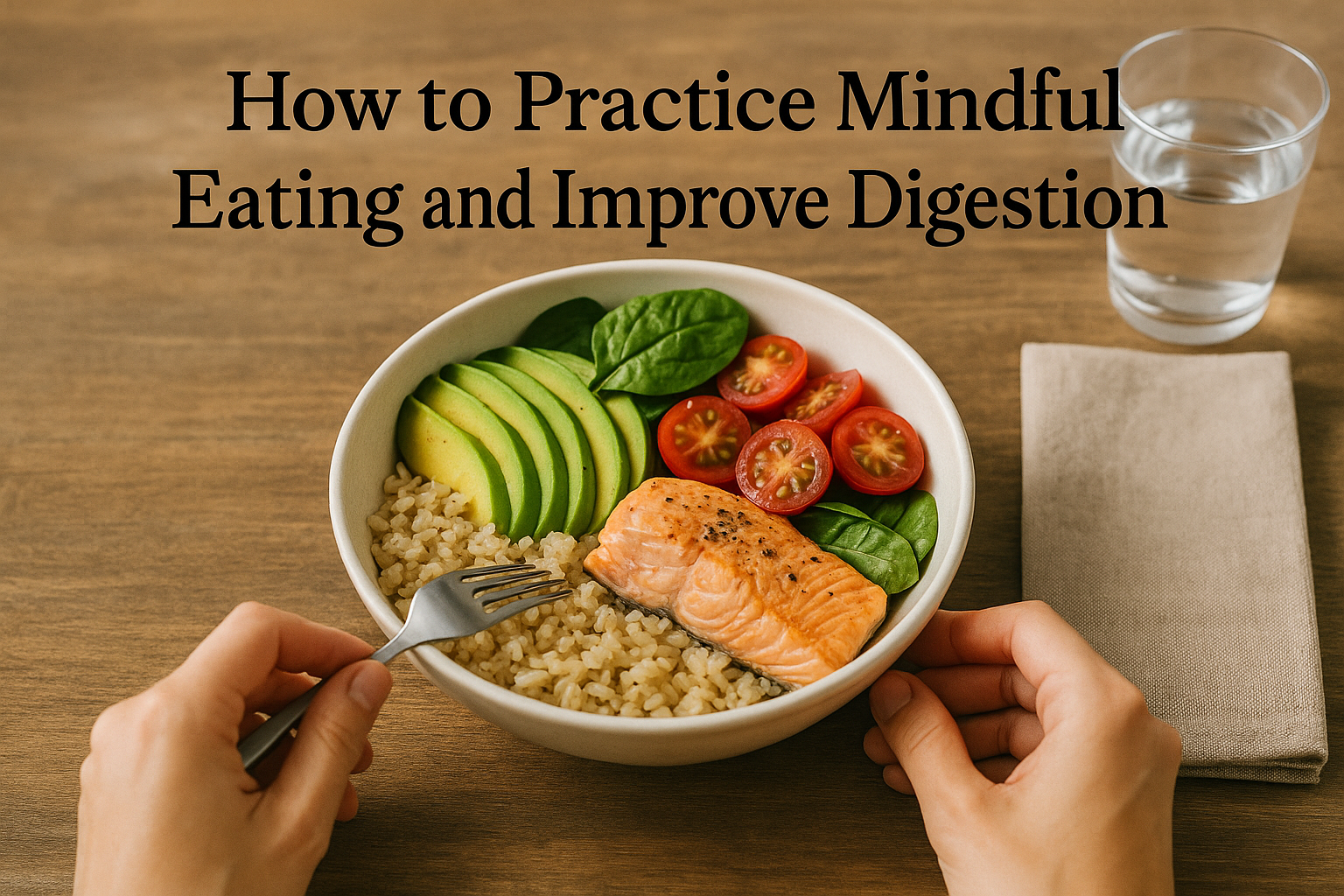Mindful eating is about more than just what you eat. It’s about how you eat. In a world filled with distractions, rushing through meals is common—but it can lead to overeating, poor digestion, and a weakened connection with your body’s hunger and fullness signals.
Practicing mindful eating brings awareness back to the table. It helps you enjoy your meals more, eat the right amount for your needs, and improve digestion through calm, present-moment attention.
What Is Mindful Eating?
Mindful eating means paying full attention to your food—its flavors, textures, smells, and how it makes you feel. It also means being aware of hunger, fullness, and emotional cues. It’s about eating with intention rather than on autopilot.
This practice isn’t a diet or a set of food rules. It’s a way to strengthen the connection between your mind and your body.
How Mindful Eating Supports Digestion
When you eat in a calm, focused state, your body is better prepared to digest. Your parasympathetic nervous system, which controls rest and digestion, activates when you’re relaxed. This means your stomach produces more digestive enzymes, your gut moves food more efficiently, and nutrients are better absorbed.
By contrast, eating while distracted or stressed often leads to bloating, gas, or indigestion.
Key Principles of Mindful Eating
Eat without distractions by turning off screens and setting aside work or conversations that demand your attention
Eat slowly and chew thoroughly to give your body time to process and signal fullness
Notice the taste, texture, temperature, and aroma of each bite
Check in with your body before, during, and after your meal
Ask yourself if you’re eating out of true hunger or emotional cues
Pause midway through the meal to assess how satisfied you feel
Stop when you’re comfortably full, not stuffed
These habits build a stronger relationship with food and your body’s natural rhythms.
Benefits of Mindful Eating
Improved digestion is one of the first benefits people notice. By chewing more and eating slower, you support your gut in doing its job effectively.
Other benefits include better portion control, reduced emotional eating, more enjoyment from food, and greater awareness of how different foods make you feel physically and emotionally.
It also encourages food freedom. Rather than labeling foods as good or bad, you begin to notice how they truly affect your well-being.
How to Start Mindful Eating
Choose one meal per day to eat mindfully. Begin with breakfast or lunch, when your energy is typically more stable.
Take three deep breaths before your first bite to shift into a calmer state
Put your utensils down between bites to avoid rushing
Notice if you’re full or satisfied before going for seconds
Eat with gratitude and awareness of where your food came from
Sit at a table instead of eating on the couch or while driving
Small steps make a big difference. You don’t have to be perfect—just more present.
Common Challenges and How to Overcome Them
If you’re used to multitasking while eating, it may feel uncomfortable at first to slow down. Start small with just a few mindful bites and build from there.
If emotional eating is a pattern, journaling or taking a few deep breaths before eating can help you pause and choose how to respond rather than react.
If you eat too fast, try using your non-dominant hand, eating with chopsticks, or setting a timer to pace yourself.
Final Thoughts: Turn Meals Into Moments of Presence
Eating is one of the most frequent and necessary rituals in your life. Turning it into a mindful practice not only improves digestion but also deepens your connection with yourself.
You don’t need a perfect schedule or a strict routine. You just need to pause, notice, and enjoy. Over time, mindful eating becomes natural—and each meal becomes an opportunity for nourishment, not just for your body, but also for your mind.

